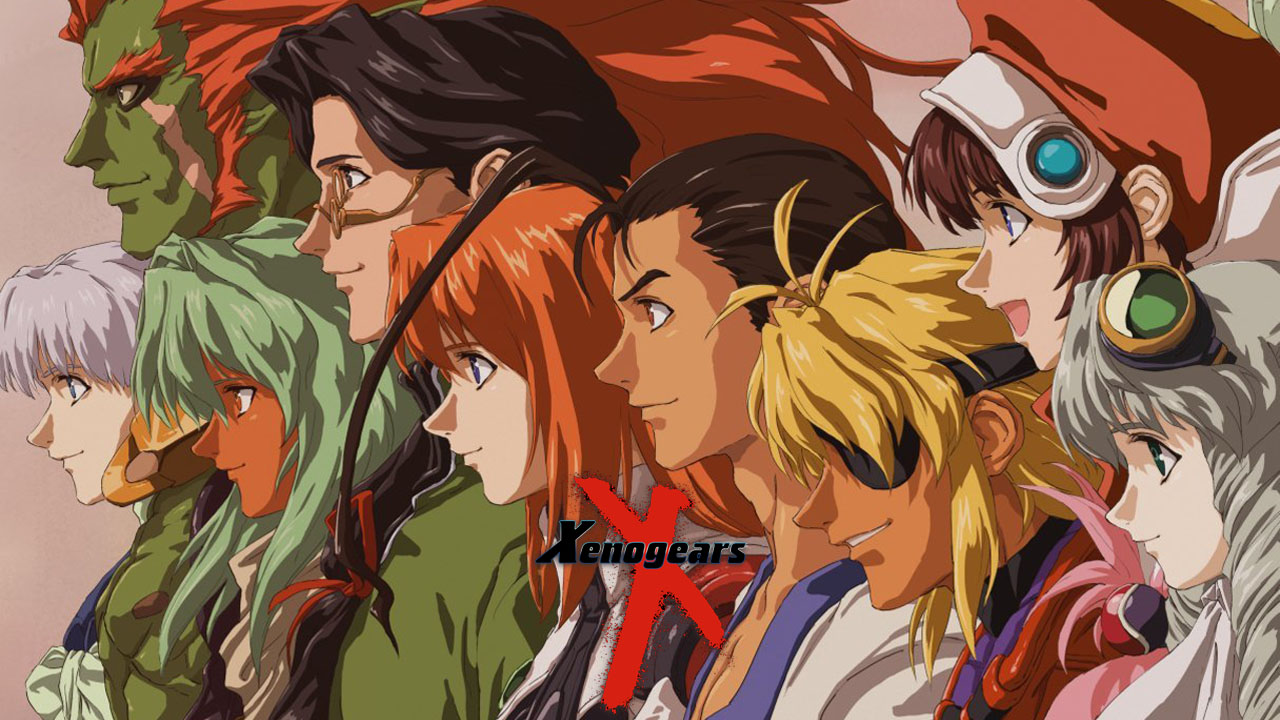
Before there was Xenoblade Chronicles, before the Xenosaga trilogy, there was Xenogears. At the time of its release, JRPGs were evolving; becoming more mature and sophisticated. The story-telling was becoming more visual and conceptual designs were becoming more layered and steeped with symbolism. SquareSoft in the 90s was already going in this direction, but Xenogears took it further than most.
On the surface it would have been easy to dismiss Xenogears. It featured martial arts, giant robots, an anime aesthetic and video games as a medium were still widely looked down upon as a viable art form. Even the anime style was still often regarded as “that weird violent tentacle cartoon crap from Japan”, which would make it a hard sell in the west.
Yet Xenogears could not be ignored. Despite everything going against it like the complex development and alienating premise, Xenogears was a success – getting a PlayStation “Greatest Hits” release and being fondly remembered. Want to know what lead up to Xenoblade Chronicles 3? Find out in this Xenogears review!
Xenogears
Developer: SquareSoft
Publisher: Square EA
Platforms: PlayStation (reviewed), PlayStation 2 (via backwards compatibility), PlayStation (via backwards compatibility/PSN), PlayStation Vita (via PSN)
Release Date: October 20, 1998
Players: 1
Price: $9.99 USD (PSN)
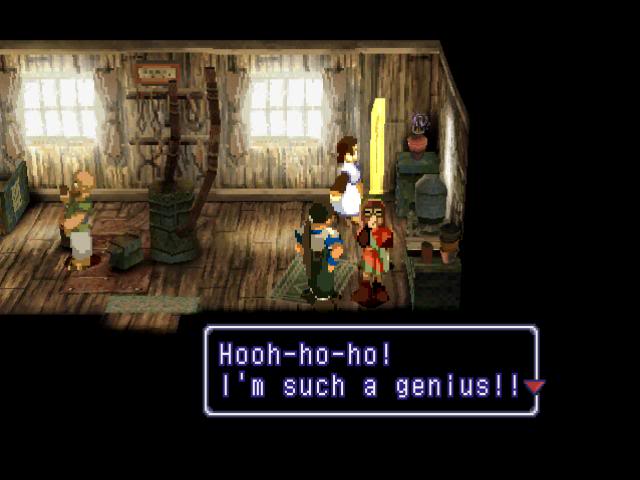
SquareSoft during the 90s was where they were at their creative peak. Hit after hit, it seemed like they could not fail and among this string of successes was Xenogears; their most ambitious RPG they would ever produce until Final Fantasy X. This was to be a philosophical and spiritual epic that explored controversial themes, while pushing the PlayStation to its limit.
The story is structured very conventionally to further draw the player deeper into its premise. It begins with a straightforward “hero’s journey” template, but even early on it is apparent that there is more than meets the eye as curious seeds are planted in the plot.
Fei Fong Wong begins his quest with his village being destroyed by being caught up in a skirmish between two opposing nations: Aveh and Kislev. The battle broke out over the transport of a Weltall; a new kind of Gear (Gears being weaponized mecha) and as fate would have it, Fei finds himself destined to drive it. When Fei drives Weltall, everyone else has a bad time.
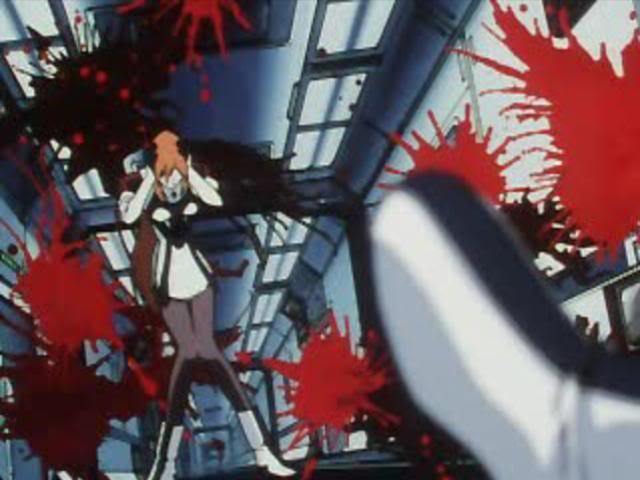
Fei’s character development is a very long and drawn out journey. He is seemingly bound to the Weltall by a higher force beyond understanding and his quest is steeped with philosophical undertones.
Dense concepts from the likes of Friedrich Nietzche, Sigmund Freud, and Carl Jung are often invoked in the story. Fei has repressed memories and finding himself is only a piece of a larger tapestry involving a brutal war between two nations and an elite secret cabal undermining humanity.
Fei isn’t alone in this elaborate conspiracy. Joining him is the enigmatic Citan Uzuki, a character who has often been a basis for a reoccurring character in the Xenosaga games, as well as Dunban in Xenoblade Chronicles.
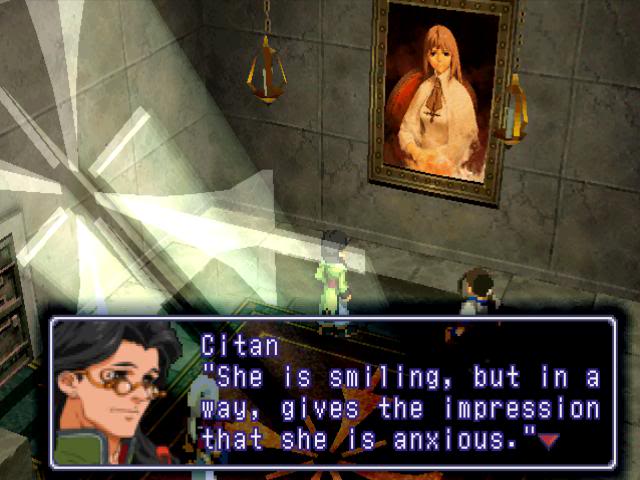
The various party members that join all get arcs that test their character deeply. Xenogears often has lengthy scenes of character moments that linger and are deliberate with their pacing- all to serve a greater purpose to make the player feel a certain way.
Despite the exciting scenes of action and adventure peppered through out the 60+ hour quest, Xenogears‘ most memorable scenes are the dramatic moments of characters talking. Sometimes there is a giant robot in the scene too, but the emotional core of these moments are characters dealing with deep and personal issues.
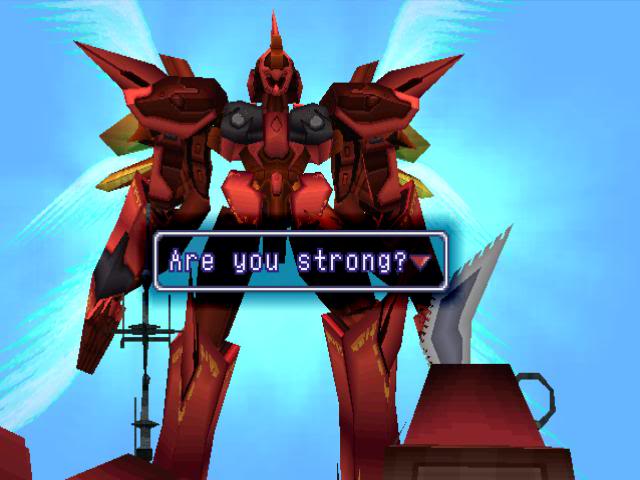
The only exceptions to this are in two characters; the first being Rico, the burly green monster-man who has barely a role in the story after he is introduced. The other character is Chu-chu, an obnoxious cartoon mascot who clashes with the look and feel of everything in Xenogears and utterly breaks the story when she’s center stage.
Chu-chu is like a 9/11 tragedy on the player’s enjoyment; be it as a party member or as her role in the story. On the day Xenogears gets remade, Chu-chu would benefit with a complete re-write or be cut out entirely. The character is too absurd and nonsensical in a story that is full of gravitas.
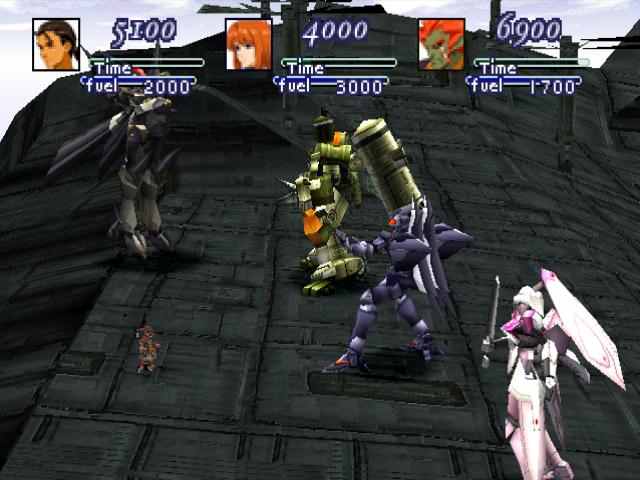
When characters aren’t working through some heavy personal demons, the narrative explores theological themes. Xenogears‘ general premise revolves around the protagonist slaying a man-made God- a profane imitation that can be best described as a demiurge.
It can be easy to misinterpret Xenogears as having an “anti-God” theme, but the reality it is the opposite. The position the game has on organized religion is staunchly negative, as the most heinous characters tend to be powerful leader figures who manipulate the lower classes.
The most prominent message in Xenogears is that people should be weary of blindly following anything. The duality of man and just how destructive we can be when it makes no sense- humans are just weird and flawed, yet it also becomes our greatest asset. For such an old RPG about giant robots, Xenogears handles these subjects with incredible grace and nuance.
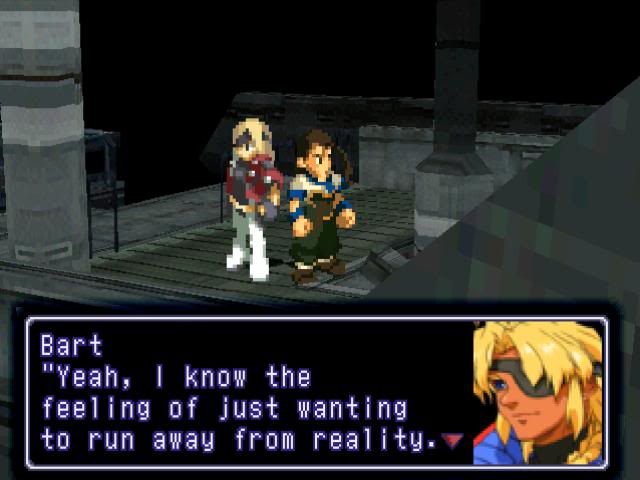
The story of Xenogears is by far its greatest strength. It covers such a wide amount of subjects and themes that are rarely explored in RPGs, mostly because of how controversial some of these concepts can be. There are scenes of implied sex and even some instances of sexual abuse. Even depictions of transhumanism are surprisingly accurate for something from 1998.
Free will and the theory of collective unconsciousness are the core themes of Xenogears by far and are fully realized in Fei’s character. Amusingly, Xenogears is a T-rated game despite the incredibly heavy ideas it explores. Kids who grew up with this game experienced a revelation and likely had a profound awakening.
Xenogears is a two-disc RPG, and while it was one disc less than Final Fantasy VII, it manages to be longer. The first disc is roughly the length of most RPGs and is a bulk of the game; clocking in at about 40 hours. In the first disc, Fei and company will go on a sweeping adventure across the world, get a flying ship, explore a “food processing plant”, go to war, and even battle zombies.
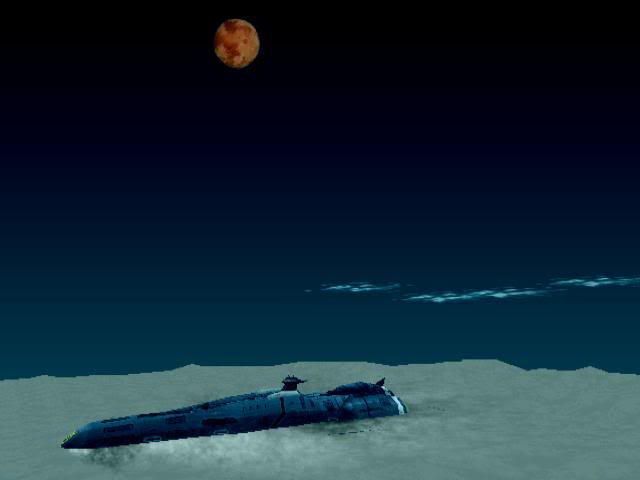
Disc one would be enough to satisfy most RPG fans. With disc two, gamers would expect the story to further expand and climax. What follows instead is a 20-hour long introspective nightmare with loads of text and boss battles. For many, this is where Xenogears will falter and is where most players will stop playing.
For the Xenogears faithful, the arduous struggle of disc two is worth it. The music and bizarre visuals that were used to convey the story as economically as possible makes for a very atmospheric experience. The soundtrack especially has to carry a lot of what is happening by setting the mood for hours of text, and it delivers.
Throughout the entire game, the music is flawless. It often rides a line of memorable melody and ambient enough to fade into the background. The instruments emulated in the synthesizer are an eclectic mix of harp sounds and some Middle Eastern influences.
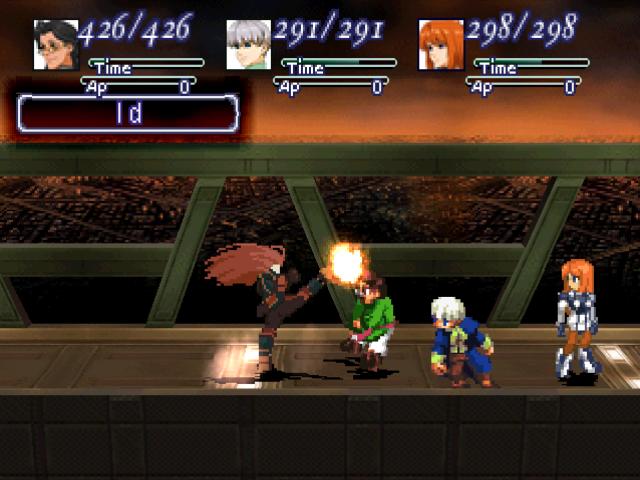
Xenogears was composed by Yasunori Mitsuda and he brings a lot of the style he developed during his days crafting the music in Chrono Trigger. A lot of the wistful melodies and influences from various cultures Mitsuda establishes here and would carry on into Chrono Cross.
The only problem with the soundtrack is that there is just not enough music to fill out such massive and long RPG. This results in several pieces of music being reused excessively and becoming tedious. Sometimes there are some tracks that are used inappropriately- like during a battle involving Chu-chu going up against a boss.
Xenogears‘ soundtrack easily ranks as one of the best works to come out of SquareSoft. This is saying a lot for a game developer that has always been consistent with delivering nearly perfect music for every single one of their games for over 30 years.
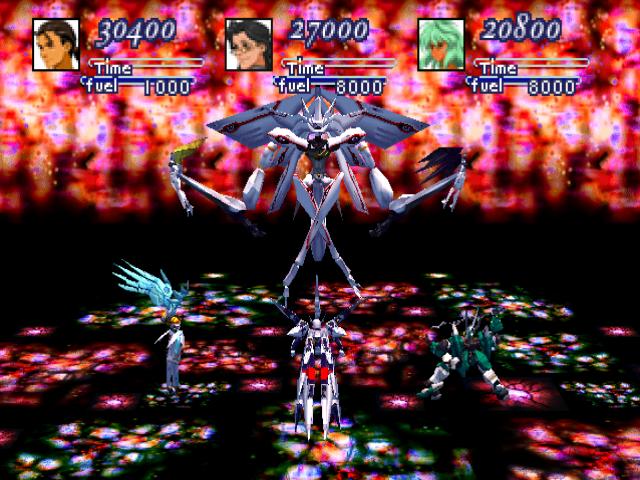
For all of its grand ideas and introspection, Xenogears‘ gameplay is a very basic turn-based RPG that can be easily exploited and broken with a little know-how. While it is very functional and even enjoyable for its safeness, the gameplay is easily the least interesting aspect of Xenogears.
Combat involves using button inputs to form combos that build up a gauge that can be expended to unleash bigger attacks and on top of that is standard abilities that come at a MP cost. It is very simple and every character is set to learn specific moves and is generally immutable.
The “gears”, or giant robots are where players are given a bit more to work with strategy-wise and are given more freedom to customize. Managing resources like fuel and ether is a bit more complex than fighting out of a mech and large foes that require gears will typically be a bit more puzzle-like when battling, so players can’t get too complacent in strategy.
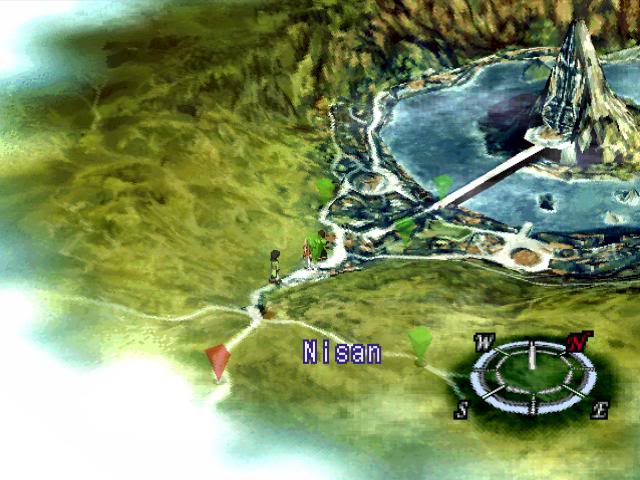
When not in combat, Fei is able to traverse and explore a vast world that is impressively detailed and fully 3D. The size and scope of the setting in Xenogears is probably one of the biggest 3D environments in terms of combined land mass. There are many towns and places to see, expansive vistas, and hidden away areas that use both X and Y axis.
Xenogears was so ambitious that it utilized some 3D platforming. Fei and company can jump around and scale extremely elaborate and dense environments, making the world feel much more three dimensional when most RPGs are flat plains. This is something that was carried over in the Xenoblade games and makes the world feel so much deeper.
It isn’t perfect; the camera can only rotate 45 degrees, and that is not always a guarantee. The environments are designed like detailed dioramas and sometimes there is some geometry obstructing the POV regardless of what direction the camera swings too.
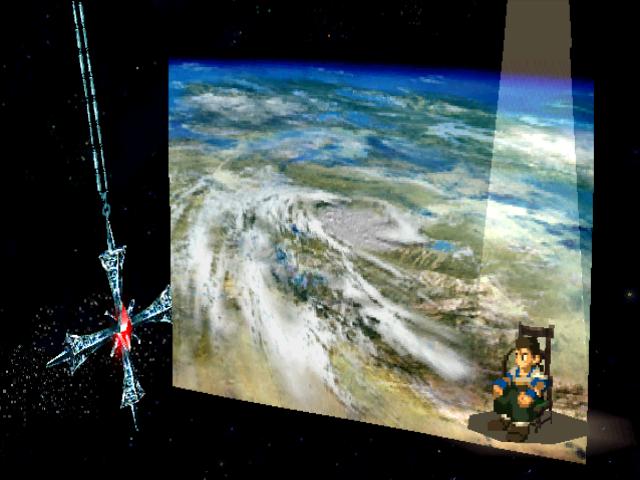
There is a lot of charm in these models and it is not hard to imagine how an “HD-2D” remake of Xenogears might look. The graphics have aged pretty well for a game that pushed so hard for 3D settings when SquareSoft typically did environments as 2D pre-renders. Textures are especially pleasing and have painterly qualities to them.
Anyone interested in playing Xenogears will find that physical copies now fetch absurd prices in the second-hand market. Thankfully, anyone with a PlayStation 3 or PlayStation Vita can still purchase a digital version on PSN for $9.99, so long as you’re willing to endure the nightmarish hellscape of PSN. For its price, you won’t find a more generous RPG than Xenogears.
Tetsuya Takahashi is a true master RPG director and even this early in his career, he managed to make one of the greatest examples of the genre. Xenogears is certainly flawed, but it is a very impressive RPG that is still engrossing. Many people may lose interest when the second disc overwhelms them with hours of text, but the contemplative ambiance is unique in its own right.
Xenogears was reviewed on PlayStation using a copy purchased by Nichegamer. You can find additional information about Niche Gamer’s review/ethics policy here. Xenogears is now available for PlayStation and playable on PlayStation 3, and PlayStation Vita via backwards compatibility and digital download from PSN.